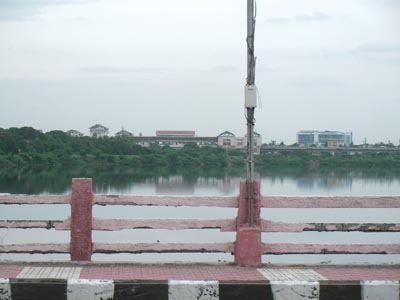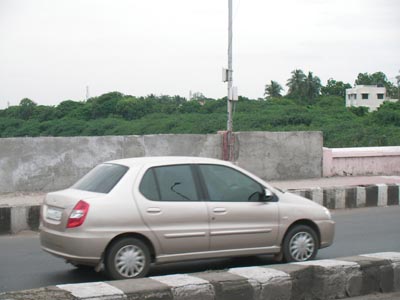
Railings (above) once enabled passers-by to a splendid view of the eco-richness of the Adyar, which certainly provided a scenic view on both sides of the Thiru Vi Ka Bridge. Now that pleasure is being blocked out by an insensitively built 5-foot wall. No one crossing the bridge in a vehicle can get a view of the river and its eco-system. What's led the Corporation to this bit of crassness?
 |
The Heritage Conservation Committee (HCC) was set for the Government of Tamil Nadu by Chennai Metropolitan Development Authority following a directive of the High Court of Madras. This was more than three months ago and since then heritage conservationists and activists have been closely monitoring its working. And what is being reported from various sources have only confirmed the initial doubts that Madras Musings expressed – that a Committee largely comprising representatives from government departments and institutions would invariably be bureaucratic-oriented and slow in its functioning. And this does not bode well for the 400-odd heritage buildings that this Committee is supposed to take steps to protect.
It will be recalled that the Committee had sent out letters to owners of the listed buildings stating that they could not undertake repairs/structural modifications / demolitions of the structures in their possession without intimating the Committee. These letters were drafted in July and the process of sending them out began shortly thereafter. It now appears that letters have yet to be actually sent to several of the owners. Around 300 letters have been sent and the rest are still to be sent. One reason cited for this is procedural delay. The second is that it is next to impossible to find out the names and addresses of owners of some of the heritage properties. The first argument is rather difficult to stomach in this electronic age when communication is at its fastest, even by regular post. A batch of letters to 400 recipients is a matter of a week’s work at most. As for the second reason, it is impossible to believe that between the Chennai Corporation and the CMDA it is difficult to trace details of ownership. When ‘no encumbrance certificates’ for properties are obtainable within a day from the civic body, details of ownership surely can be similarly traced from tax and other revenue records. Today, most of these details are computerised. All it requires is for one member of the Committee to be made responsible for this task, give him/her appropriate administrative support, fix a deadline and periodically review the progress in the search for ownership details.
Such a solution would be workable had there been a full-time committee with a time schedule for the completion of its work. At present, all members have their own responsibilities and commitments to their respective departments / institutions / professions and, therefore, the work of the Committee takes a backseat. It is reliably learnt that the Heritage Conservation Committee has not met in the past two months, as most members have been busy otherwise. Some of the Committee members have also been alerted by e-mail about demolitions but there has been no response whatsoever. The results are there for all to see.
The letters sent out have meanwhile added to the confusion. Those who have received them are quick to point out that no penalty of any sort has been specified for the demolition of a heritage building. It can at most mean a fine, they say. Some have also begun to explore ways and means of getting their properties de-listed. They argue that by prohibiting them from demolition / renovation / development, the Committee is effectively tying their hands and preventing them from moving in any direction. And some of the buildings are in urgent need of restoration. If no maintenance work is permitted, they will anyway go to seed. Those who don’t have the funds to undertake such activity feel that if the Government is so keen on protecting heritage buildings, it should come forward with suitable compensation schemes. Of course, the more brazen elements among the owners are continuing regardless and, as has been reported earlier, some of the buildings have already vanished or changed beyond recognition, letter or no letter.
If the Heritage Conservation Committee is to make a positive impact, it needs to completely change its style of working. The present bureaucratic methods, involving the maximum use of red-tape, is not going to get us anywhere towards conservation.
|